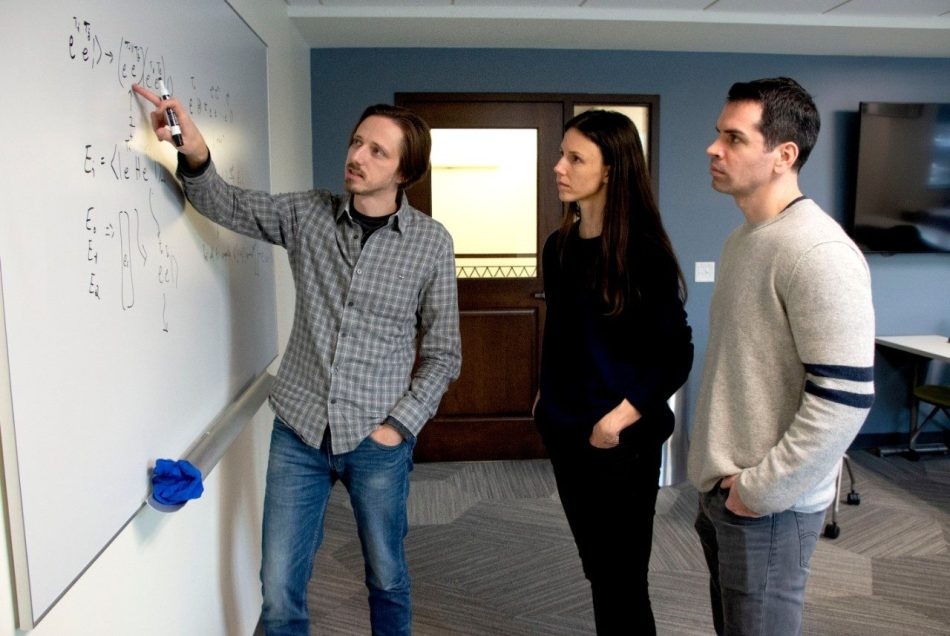Jul 29 2019
Several decades could be needed to realize the huge, error-correcting quantum computers visualized at present. However, researchers are making intense efforts to find ways to employ already available and near-term quantum processors to provide solutions to useful problems in spite of their drawbacks due to “noise” or errors.
 (Left to right) Nick Mayhall, Sophia Economou, and Ed Barnes, all of the Virginia Tech College of Science. (Image credit: Virginia Tech College of Science)
(Left to right) Nick Mayhall, Sophia Economou, and Ed Barnes, all of the Virginia Tech College of Science. (Image credit: Virginia Tech College of Science)
An important visualized use is the simulation of the properties of molecules. In the longer term, this can result in further progress in drug discovery and materials improvement, but without the noisy calculations that impair the results.
Currently, a group of physics and chemistry researchers from Virginia Tech has achieved further progress in quantum simulation. They achieved this by developing an algorithm with the potential to more efficiently calculate the molecular properties on a noisy quantum computer.
Recently, Ed Barnes, Sophia Economou, and Nick Mayhall—faculty members from Virginia Tech College of Science—have described the advancement in a paper published in Nature Communications.
It is expected that quantum computers can carry out specific types of calculations far more efficiently when compared to the existing “classical” computers. However, they are similar to classical computers since they run algorithms by applying logic gate sequences—here, “quantum gates,” which jointly form quantum circuits—to bits of information.
In the existing noisy quantum computers, the issue is that so much noise accumulates inside a circuit that the computation degrades and makes any further calculations imprecise. Researchers have found it difficult to design circuits that are not just shorter but also more accurate.
The Virginia Tech researchers dealt with this problem by devising a technique that develops the circuit in an iterative manner.
We start with a minimal circuit, then grow it as we add on logic gate after logic gate in short circuits until the computer finds the solution.
Nick Mayhall, Assistant Professor, Department of Chemistry, Virginia Tech College of Science
Another important advantage of the algorithm is that Barnes, Economou, and Mayhall developed it to adapt itself based on the molecular system that is simulated. Different molecules direct their own circuits, exclusively customized to them.
The National Science Foundation and the U.S. Department of Energy have awarded grants worth over $2.8 million to the interdisciplinary collaboration between Virginia Tech’s departments of Chemistry and Physics—Barnes, Economou, and Mayhall and a group of postdocs and graduate students from both departments.
Recently, Virginia Tech and IBM forged a collaboration that offers the scientists access to IBM’s quantum computing hardware.
Our team at Virginia Tech is really excited for the next steps in our work, which include implementing our algorithm on IBM’s processors.
Sophia Economou, Associate Professor, Department of Physics, Virginia Tech College of Science